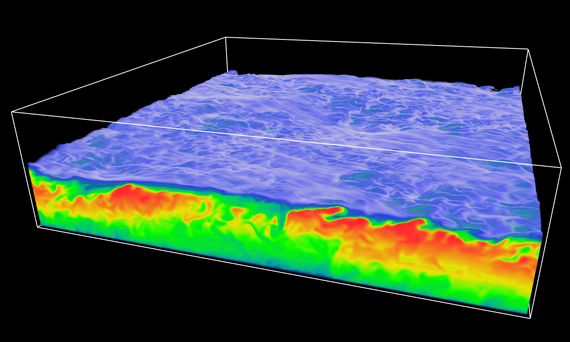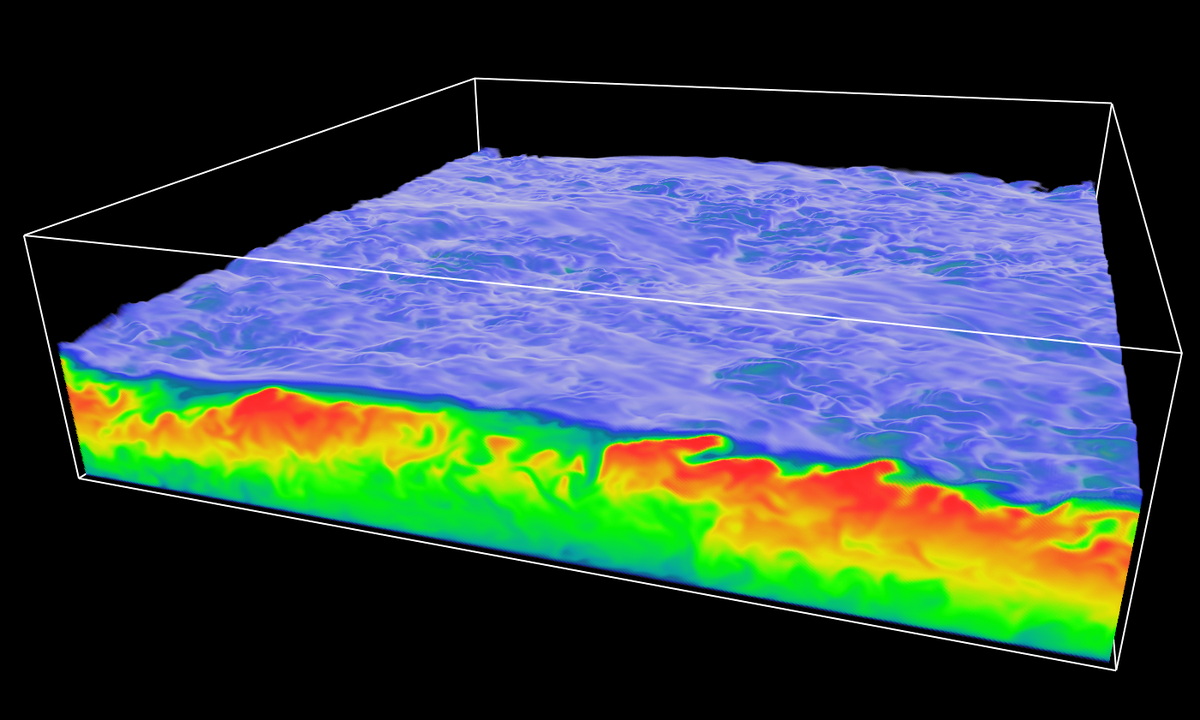Björn Maronga
High-resolution numerical studies on the effect of turbulence on nocturnal radiation fogs
Fog as a meteorological phenomenon can have a strong impact on the economy but al so on personal safety by reducing the visibility in the atmospheric boundary layer. Total economic losses associated with fog on aviation, marine and land transportation are comparable to those of winter storms. Despite the fact that there is abundant literature on fog research, our knowledge about the physical processes that lead to fog formation and its microstructure remains partial. This is due to the fact that many complex processes like radiative cooling, turbulent mixing and the microphysics of fog interact non-linearly with each other. Moreover, surface heterogeneity regarding vegetation and soil characteristics further complicate the predictability of fog. Consequently, the fog forecasting capability of numerical weather prediction models is still poor.
In this project, high-resolution large-eddy simulations (LES) will be used to investigate the effect of turbulence on nocturnal radiation fogs. The LES model PALM will be used at very high resolution in the order of 1 m with both an Eulerian bulk cloud physics scheme and an embedded Lagrangian particle model that allows for explicitly resolving aerosols and fog droplets will be employed. This innovative approach allows for studying fog droplet-turbulence interactions for the first time with LES. The aim of this study is to achieve a comprehensive view on the key parameters that determine the life cycle of radiation fog as well as its three-dimensional macro- and microstructure. Moreover, the effect of a nocturnal fog layer on the morning transition and the daytime boundary layer will be studied. The effect of surface heterogeneity on nocturnal radiation fog will be investigated by means of LES with prescribed idealized regular and observed irregular surface heterogeneities. The simulation data will be validated with observational data from the super-sites at Cabauw (The Netherlands) and Lindenberg (Germany), and compared with simulation data from the one-dimensional boundary layer and fog forecasting model PAFOG (University of Bonn, Germany).
This research project is funded by DFG under grants MA 6383/1-1 and MA 6383/1-2.





